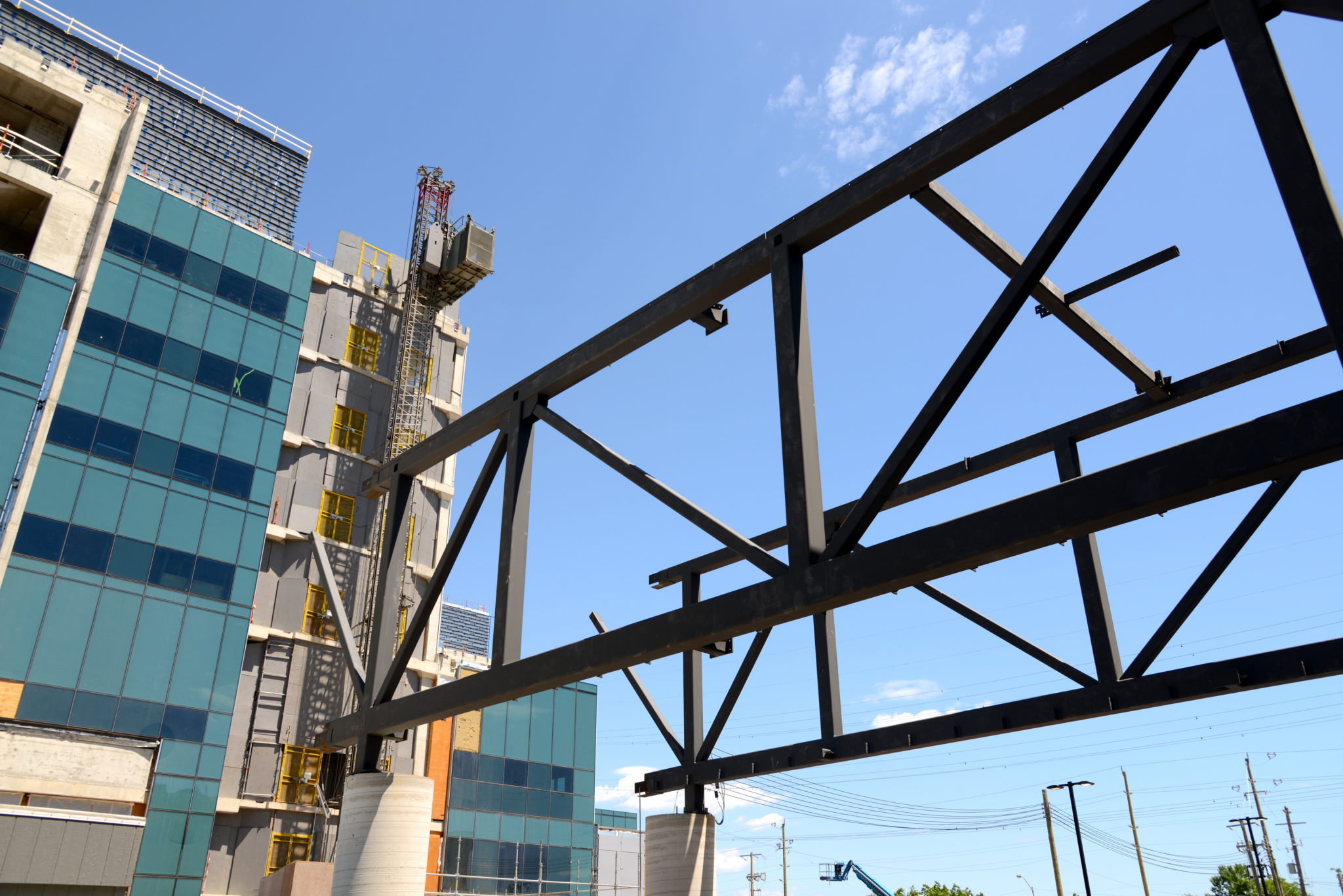The infrastructure silo has come down in Ontario.
The release of the new Long-Term Infrastructure Plan (LTIP) for Ontario has signalled that the needs to build and rehabilitate the province’s infrastructure must align with the growing socio-cultural and environmental needs of the communities it serves. The priorities of infrastructure development in Ontario, through the Ministry’s lens, reflects some of the current priorities of other ministries within the provincial government.
The 160-page plan includes four key priorities the Minister of Infrastructure Bob Chiarelli and his team will focus on moving forward: life cycle assessment, community benefits, access to internet, and strategic utilization of provincial assets. These four areas provide the base for the report that charts a new direction for the planning and execution of infrastructure development in Ontario.
The new plan delivers a strong focus on the environmental impact of infrastructure development in Ontario, with a plan to implement life cycle assessment for all projects by 2019-2020. This will provide an understanding of the greenhouse gas impacts of asset development, and can be used to strategize ways to reduce emissions within the sector.
“It puts an environmental cost on a project instead of just the fiscal cost as we do today. I think this is a very important new policy,” Chiarelli noted to ReNew Canada following the release of the LTIP.
According to Chiarelli, this initiative has had strong support from both the building and environment sectors, and it further aligns with the province’s climate action plan to reduce emissions in Ontario by 80 per cent below 1990 levels.
Information on the life cycle assessment plan will be posted on the environment registry for additional consultation over the coming months before the new policy is formally introduced.
Expanding Community Benefits
Early positive outcomes from the Eglinton LRT Community Benefits program have resulted in an expansion of the project in the updated version of the LTIP.
The program has been lauded for its efforts to provide social, cultural, and economic benefits for communities impacted by large-scale urban infrastructure projects. In the case of the Eglinton LRT, consortiums that were qualified to submit a proposal for the project had to “include plans for increasing apprenticeship training on the Crosstown, providing significant opportunities for local companies, and ensuring design excellence and community benefits,” according to Metrolinx. The framework for the program was developed in cooperation with the Toronto Community Benefits Network.
As part of the LTIP, more pilot programs will be developed in concert with specific large-scale projects province-wide, with a primary focus on Toronto.
“It will have primary application in the GTA, in the core of Toronto, because that is where a lot of the disruptive construction takes place,” Chiarelli said. “We’re very sensitive to the imposition that is on small business, pedestrians, and elderly people trying to manipulate their way through (the construction).”
Involving the Canada Infrastructure Bank
The Canada Infrastructure Bank (CIB) is a new asset that Chiarelli hopes can assist the province’s efforts in developing new infrastructure assets across Ontario. Specifically, he cited the opportunities for expanding broadband access to throughout the province.
The province will be delivering a comprehensive broadband policy in 2019, and between now and then, Chiarelli and his team plans to further engage the private-sector and the CIB. By doing so, there is the potential for a new way to fund the expansion of broadband to all Ontarians without forcing the three levels of government to fit the entire bill for the up-front costs.
An Inventory of Assets
For the first time, the LTIP provides a full inventory of provincial infrastructure assets. The report introduces a sector-by-sector analysis of the assets it currently owns, breaking them down either by ‘Proportion of Assets by Condition’ or ‘Proportion of Assets by Renewal Need’.
According to the report: “The government has made significant strides in asset data collection and analysis. Its next steps will be to expand the data collection and analysis related to infrastructure capacity, demand and utilization, and to strengthen Ontario’s infrastructure planning and priority-setting process.
With its new plan in place, the ministry has a clear direction for how it plans to approach infrastructure development in the province well beyond the upcoming election in June of 2018. Several of these policies have months or years of stakeholder consultations built in, which will provide the industry with plenty of opportunity to help mould the final policies before they are introduced in the coming years.
To read or download a copy of the full report, visit:
https://www.ontario.ca/document/building-better-lives-ontarios-long-term-infrastructure-plan-2017
















